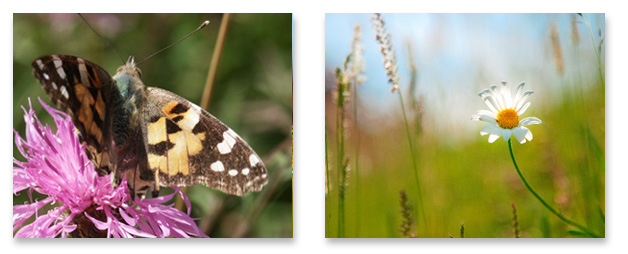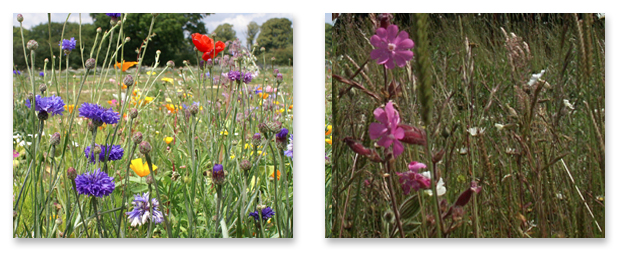Native plants could be described as the backbone of local ecology.
With a low maintenance option that will give colour throughout the spring and summer, and provide form into the autumn months, wildflowers are surely the perfect answer to road verges, central reservations and even roundabouts. In fact road verges are becoming a vital last refuge for our wildflowers of meadow and old pasture.
Plantlife launched a UK campaign in response to members of the public complaining that their local verges were being mown down almost as soon as the flowers bloom! This is a major concern. If these verges are routinely being mown down, even when the flowers are in full bloom, or sprayed off with poisons and then the cuttings left on the verge, choking out any chance of the flowers recovering, what happens to the wildlife? Over time, the only plants that can survive this kind of management will be nettles and coarse grasses. As the flowers disappear, the verges lose their ecological value for the local wildlife, due to the loss of biodiversity. Unless there is a suitable and accessible alternative nearby the populations will most likely be lost.

Studies made beside 12 main roads in Dorset and Hampshire were carried out, revealing that verges and central reservations are utilised by a wide variety of butterflies. Variation in the number and species of butterflies seemed dependent upon the range of breeding habitat available on these verges. To provide a more viable habitat the verges and reservations should be made as wide as possible, as well as planting them with native species, especially wildflowers and native grasses.
A Plantlife survey revealed that more than 75% of the councils they contacted cut their verges multiple times over the spring and summer, with not one of them collecting cuttings as part of their routine management. It begs the question, why are they doing this? Let us hope in time there will be a shift in the management by councils of our verges, by making sure that the maintenance is carried out correctly. One annual cut in the autumn, followed by the removal of these cuttings from the site is all that is required. A meadow can differ from site to site depending on factors such as, aspect, soil conditions, amount of sunlight, and temperature, however the cutting regime is the same for any site.

There is also, it seems a trend within councils to plant these reservations and verges with annuals, which are not always native species. Whilst giving the bold and colourful wow factor, these annual drifts do not necessarily hold much ecological value for the local wildlife. Perhaps a compromise is in order; by all means use colourful annuals and some non-native species, but plant predominantly native perennial wildflower and grass species. These have far more ecological value, and they will self seed the following year!